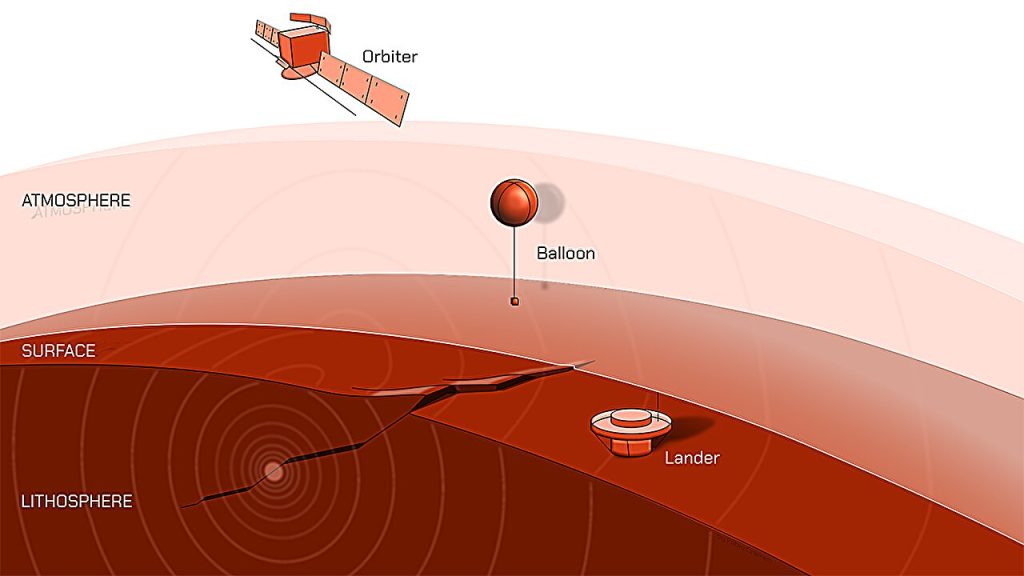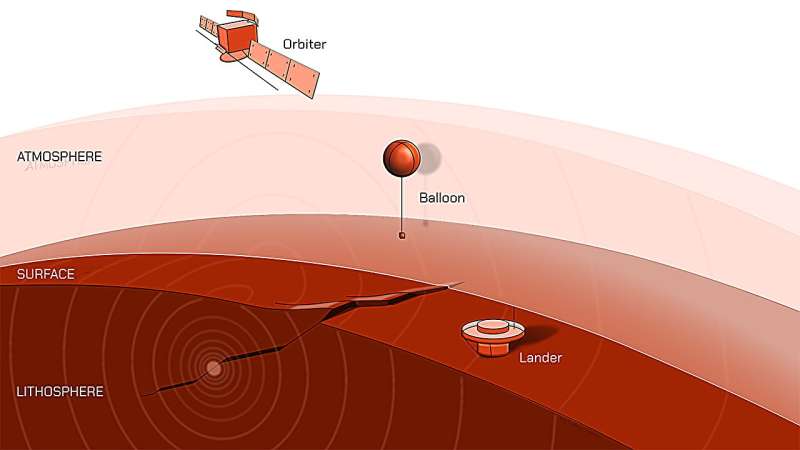
Three ways to track Venusquakes, from balloons to satellites (Image Credit: Phys.org)

Instruments aboard robotic landers have measured seismicity on the moon and Mars, helping researchers learn about the inner workings of those celestial bodies. But the internal makeup of Venus is still not known, in part because high winds and blistering temperatures make it significantly more difficult to detect quakes on the second planet from the sun.
Three approaches to studying quakes on Venus are currently plausible, write Raphael Garcia and colleagues in an article published in Earth and Space Science. Ground sensors like those used on the moon and Mars can measure seismic waves. Balloon-based pressure sensors can measure infrasound waves, a form of low-frequency waves in the atmosphere created by quakes. And satellite-based instruments can measure airglow, or light emissions from molecules in the upper atmosphere that show subtle variations when perturbed by infrasound waves.
In this study, the authors considered current estimates of seismicity on the planet to weigh the pros and cons of each method.
Sensors on Venus’s surface could detect quakes smaller than magnitude 4.0, but current ground-based technologies would likely survive less than a day on Venus, where surface temperatures exceed 450°C.
Balloons similar to those used in the Soviet Vega program might survive for months, and their ability to detect and characterize seismic waves on Earth was recently documented for the first time. However, they can detect quakes of only magnitude 4.0–4.5 and larger. Satellite-based imagers taking airglow measurements could detect Venusquakes of about the same magnitude, and they may be able to gather data for years.
Airglow measurements currently offer the best option for detecting seismic activity on Venus, the authors conclude. If possible, combining airglow measurements with longer-duration balloon-based sensors would offer an even more robust approach and reduce the possibility of misinterpreted readings, they say.
Their study helps constrain requirements for future Venusian missions aimed at studying seismicity while pointing to areas for improvement. These areas include better understanding the geographical distribution of quakes and creating more detailed noise models for each technology.
More information:
Raphael F. Garcia et al, Seismic Wave Detectability on Venus Using Ground Deformation Sensors, Infrasound Sensors on Balloons and Airglow Imagers, Earth and Space Science (2024). DOI: 10.1029/2024EA003670
Journal information:
Earth and Space Science
Provided by
American Geophysical Union
This story is republished courtesy of Eos, hosted by the American Geophysical Union. Read the original story here.
Three ways to track Venusquakes, from balloons to satellites (2024, November 26)
retrieved 26 November 2024
from https://phys.org/news/2024-11-ways-track-venusquakes-balloons-satellites.html
part may be reproduced without the written permission. The content is provided for information purposes only.






